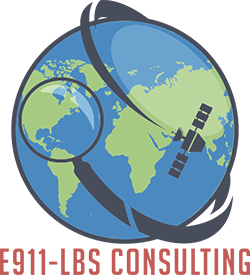Publications and Analyst Reports
Coming January 2023 – The Definitive Guide to IoT Sensors and Related Technologies
This report focuses on the providing an overview and key details on the sensors dimension of IoT, specifically those sensors that can be used as part of the Internet of Things (IoT) technologies, applications, Use Cases, and vendor product offerings.
Coming February 2023 – The Practical Guide to the Internet of Things Use Cases: This report will seperate practical reality and useful facts from the IoT smoke, mirrors, and Powerpoint presentations prevelent today. It will provide actionable frameworks and useful details for understanding IoT and incorporating it into your enterprise and consumer business and technology plans. More details to come shortly!
Coming March 2023 – THE Definitive Guide To RFID, Wi-Fi, Bluetooth Low Energy (BLE), Infrared, Ultrasound, UWB, and Beacon-Based and Other Real-Time Location Systems (RTLS) and Internet of Things (IoT) Systems. This report will be THE essential reference and educational tool for anyone interested in RTLS and IoT technology.
This report is different than nearly all other “technical” reports in that it does not focus on market sizing, growth projections, and other high-level metrics and associated explanations. In the author’s opinion, while those reports play an important role in explaining the overall market dynamics of a particular technical area, they are of limited use in understanding the technologies at a usable level—usable both in terms of detailed technical understanding, and in making actual purchasing decisions with respect to specific technology variations and associated vendors. This report focuses on providing such “usable” information, specifically targeted to:
IT and Network Executives
Business and Technology Analysts
Technology Investment Managers
Technology Product Line Managers
Healthcare, Transportation and Logistics, Manufacturing, and Education Executives and Managers, and other parties with a detailed interest in Location Technologies
In addition, many of the RTLS technologies issues are similar to those in the Internet of Things (IoT). What are the key use cases? How is functionality and data divided between the device, client, server, and cloud? What are the key decision criteria and their relative priorities?<br /> The report focuses on four critical areas of the Real-Time Location Systems market. Specifically:
- What are the applications at a detailed, use-case level within each key industry?
- What are the individual techology elements to understand before technology decisions are made?
- What are the different types of RTLS technologies, at a detailed level, including degrees of accuracy and associated use case support?
- Who are the vendors that support these technologies and use cases?
The industries covered include:
- Education
- Government and Defense
- Healthcare/Hospitals
- Hospitality
- Logistics and Transportation
- Manufacturing
- Process Industries
- Retail
The RTLS and IoT technologies covered include:
- Bluetooth Low Energy (BLE)
- Infrared
- Low Frequency RF
- RFID (Active and Passive)
- Ultrasound
- Ultrawideband (UWB)
- Wi-Fi (including time-based, signal strength based, and Radio Frequency-based location determination)
- Zigbee/Mesh
The accuracy levels potentially provided by these technologies (a critical RTLS business requirement) include:
- Campus
- Building
- Floor
- Zonal
- Checkpoint/Door
- Room Level
- Bed Level (Healthcare)
- Chair Level
- Shelf
In short, this report provides RTLS and IoT professionals and those looking to become knowledgeable about RTLS and IoT on a practical level all the information they need to understand and compare the technologies involved, how they can be applied, and the vendors that can provide the requisite technologies, tools, and services for the key use cases across a diverse set of industries. A key report for anyone considering an RLTS and/or IoT-related purchase!+
Originally published in 2004 and updated several times since, this publication is authored by highly acclaimed location technology, applications and services expert David H. Williams. This report has been updated in several areas with a particular emphasis on the business and technical issues, regulations, and impacts of 9-1-1 for VoIP service. This report provides key wireless 911 stakeholders, including state, local, and federal public safety officers, seasoned wireless executives, technology-savvy business executives, investment firms, and the educated consumer, a guide to understand the past, present, and future of wireless 911, also call Enhanced 911 or more often E-911. The report is distinguished from others because it addresses every key dimension of wireless E-911, from technologies, to regulatory issues, to business implications, to privacy implications, and much more. It covers these aspects at both the strategic level and a detailed, tactical level, providing the reader with usable information to set specific direction for his or her area(s) of responsibility. While this research will be valuable to many in the wireless industry, this report will be of particular interest to:
- Suppliers of public safety wireless systems, positioning systems (GPS, A-GPS, E-OTD, TDOA, TOA, AOA, AFLT), and location-based services (LBS) applications and services
- Companies concerned with network and systems integration between wireless carriers, public safety answer points (PSAP), and other public safety systems
- Providers of Geographic Information Systems (GIS), GIS map data, and related information for mobile location services (MLS)
- Mobile network operators and wireless service providers such as resellers, agents, and mobile virtual network operators (MVNO)
- Companies involved with next generation networks and concerned with the implementation and operation of E-911 over VoIP networks
- Companies, agencies and government entities concerned with public safety, homeland security, and law enforcement
- Companies, agencies and government entities outside the United States that want to learn from the US wireless 911 experiences. This will be of particular value to European interests in enhancing wireless 112 emergency calling services

